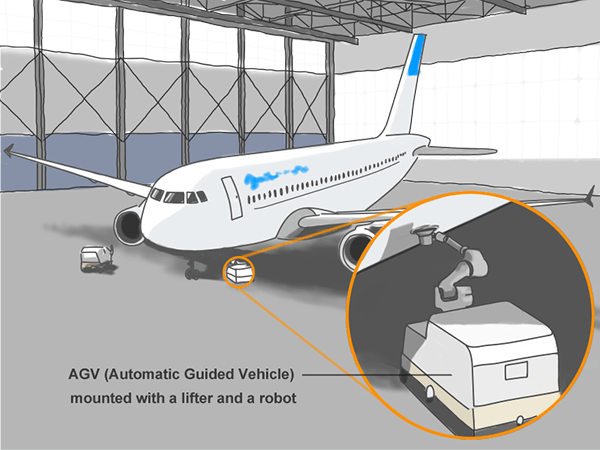Automation
Industrial robots are already widely used in the field of manufacturing, thanks to their advantages in term of stable quality, productivity improvement, reduction of costs, ensuring safety, and coping with shortages of human resources. With the rise of digitalization in recent times, manufacturing is expected to become increasingly smarter according to utilizing the IoT and robots. Adoption of these machines is spurred.
Taikisha has a long history of providing paint robot systems, primarily to automobile manufacturers, allowing us to refine our technologies and know-how relating to the building of automated systems.
A broad knowledge ranging from selection of the appropriate robots and equipment to quality assurance is required for building automated systems for automobile painting. Taikisha has worked on numerous projects, from small-scale remodeling to installation of several dozens of robots. This experiences give us extensive knowledge for selecting the optimal painting machines and robots suited to the painting environment, designing networks, and ensuring machine safety, as well as painting parameters necessary for coating quality such as evenness and color tones.
Teaching, meaning the programming of how industrial robots move, is an essential task. The teaching of painting robots must be at an extremely high level, maintaining a consistent distance between the paint gun and car body while finely controlling the angle and speed at which the paint leaves the gun, to ensure the coat is even on all surfaces down to the micron level. The bodies have many curves, requiring minute adjustment of entry data to make the robots work.
Based on our advanced technology and know-how in building such automated systems refined for the automobile paint finishing field, Taikisha intends to expand our sphere of action still further to automate several processes using robotic and conveyor technologies.
As part of this, we are already at work on the automation of sanding and painting processes for aircraft and railway vehicles. Attaching a gun to blow paint to the tip of a robot arm to paint cars is standard practice, but by changing this to rotating sandpaper for sanding, we have been developing a machine to automate the sanding to strip off old paint layers.

Use of industrial robots has serious potential to open up new applications and technologies. But simply placing robots onto factory floors is not enough to solve problems. Industrial robots will only function at their best when we analyze the issues and needs of customers and combine or integrate different technologies, or perhaps machines and applications, to create robots that fulfill those needs. Given this fact, we believe the engineering technologies of Taikisha can serve to create new value that coalesces into the ultimate solution for each unique situation.
